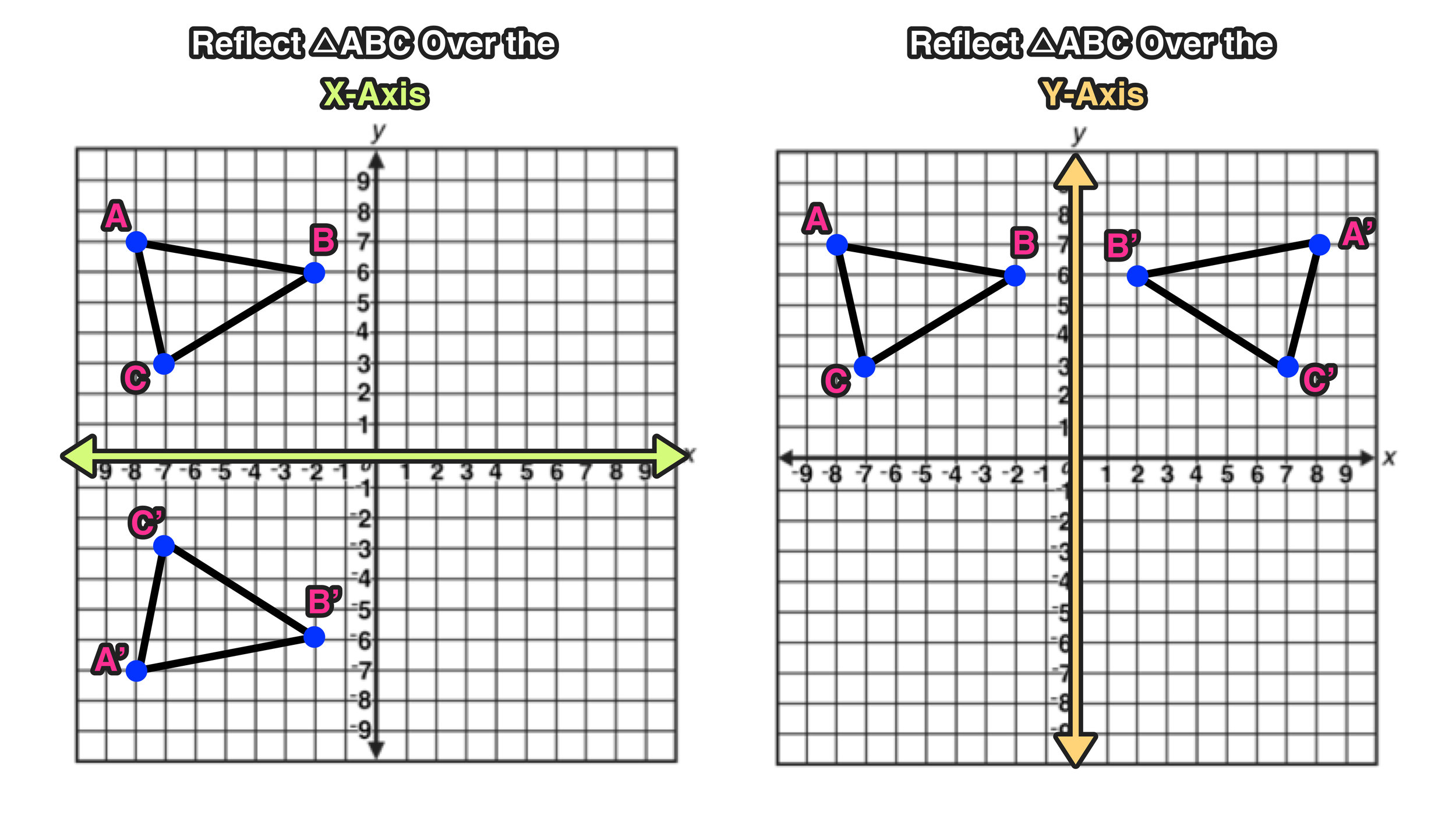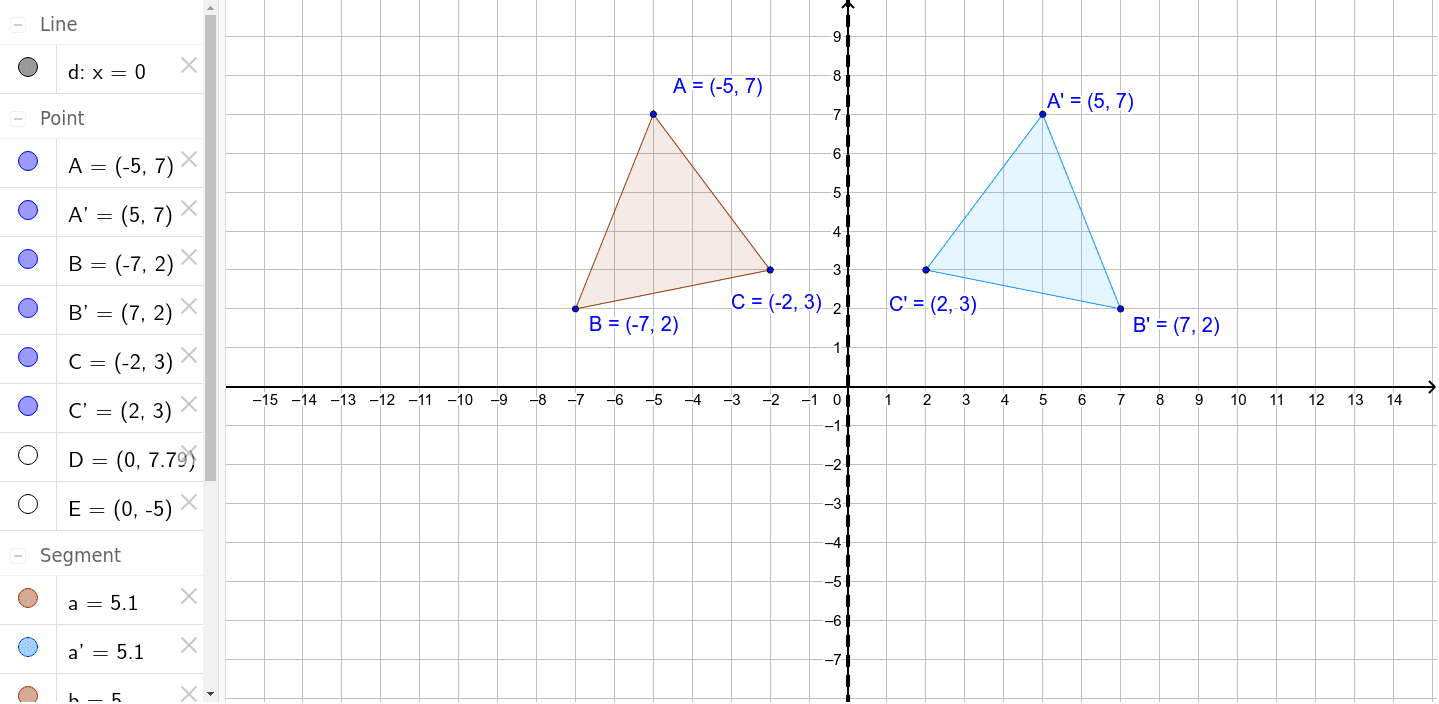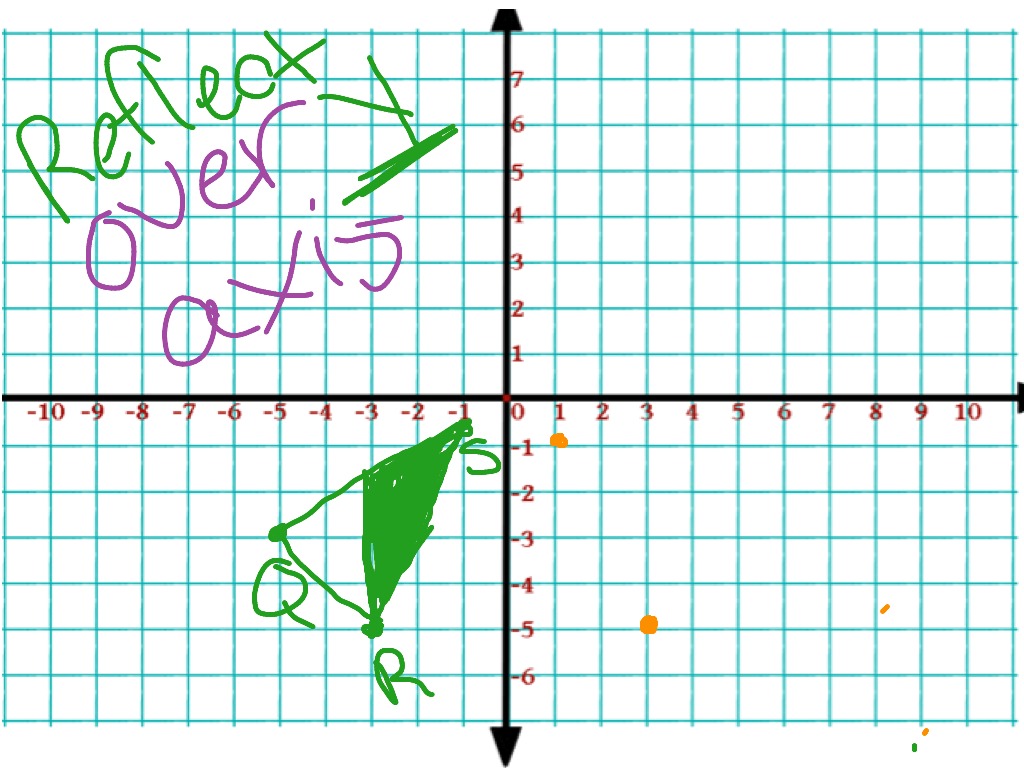

One often-used reflection is one about the origin (0,0). Notice how our properties still hold true.Īnd finally, let’s look at one last reflection. The point of reflection can be on the edge – or even inside – the figure. Here is a kite being reflected over several different points. Sounds just like reflection over a line, right? The preimage and image are congruent, but the image is a 180-degree rotation of the preimage.Īll corresponding points on the preimage and image are the same, but opposite, distance from the point of reflection.Īnd, the point of reflection is the midpoint of all segments connecting corresponding points of the preimage and image. The properties of reflections in points are very similar to those of reflections over lines: The point the dart is reflected over is called, you guessed it, the point of reflection. Here’s a dart reflected in the point (12,10). We can also reflect a figure in the coordinate plane in any point on the coordinate plane.

When a figure is reflected over the line y=x, notice that the coordinates change order. When a figure is reflected over the y-axis, notice the x-coordinates change sign. Something to notice as we look at these is that the signs of the coordinates change.įor example, when a figure is reflected over the x-axis, notice the y-coordinates change sign. Three common ways to reflect figures are over the x-axis, y-axis, and the line y=x. In some cases, the line of reflection may be on the edge – or even inside – the figure. Notice how the three properties we just discussed hold true, but also notice how, to actually create a reflection, it often involves simply counting the distances between the line of reflection and the points, or adding and subtracting coordinates. Now, here is a trapezoid being reflected over three different lines. You’ll also notice that all corresponding points on the preimage and image are the same distance from the line of reflection but in the opposite direction.Īnd lastly, the line of reflection bisects all segments connecting corresponding points of the preimage and image. Now there are a few things to notice here:įirstly, the preimage and image are congruent, but “flipped”. Point A on the preimage corresponds to point A’ on the image, and so forth. Prime notation designates the figure that is the image. The triangle on the right is our reflected figure, or image, named Triangle A’B’C’. The triangle on the left is our original figure, or preimage, named Triangle ABC. Here’s a triangle reflected over the line x=7. We can reflect a figure in the coordinate plane over any line in the coordinate plane. Let’s start by looking at reflections over a line. Like I mentioned, there are two main types of reflections: reflections over a line and reflections on a point. This idea is related to what happens when we reflect figures on the coordinate plane. When we think of the term reflection, we most likely think of looking in a mirror or a still body of water. In this case, theY axis would be called the axis of reflection.Hi, and welcome to this video about reflection! In this video, we will explore reflection of a figure over a line and reflection of a figure on a point.

Math Definition: Reflection Over the Y AxisĪ reflection of a point, a line, or a figure in the Y axis involved reflecting the image over the Y axis to create a mirror image. If a reflection is about the y-axis, then, the points on the right side. In this case, the x axis would be called the axis of reflection. Besides translations, another kind of transformation of function is called reflection.
#REFLECTION OVER Y AXIS HOW TO#
This complete guide to reflecting over the x axis and reflecting over the y axis will provide a step-by-step tutorial on how to perform these translations.įirst, let’s start with a reflection geometry definition: Math Definition: Reflection Over the X AxisĪ reflection of a point, a line, or a figure in the X axis involved reflecting the image over the x axis to create a mirror image. This idea of reflection correlating with a mirror image is similar in math.

In real life, we think of a reflection as a mirror image, like when we look at own reflection in the mirror. Learning how to perform a reflection of a point, a line, or a figure across the x axis or across the y axis is an important skill that every geometry math student must learn.


 0 kommentar(er)
0 kommentar(er)
